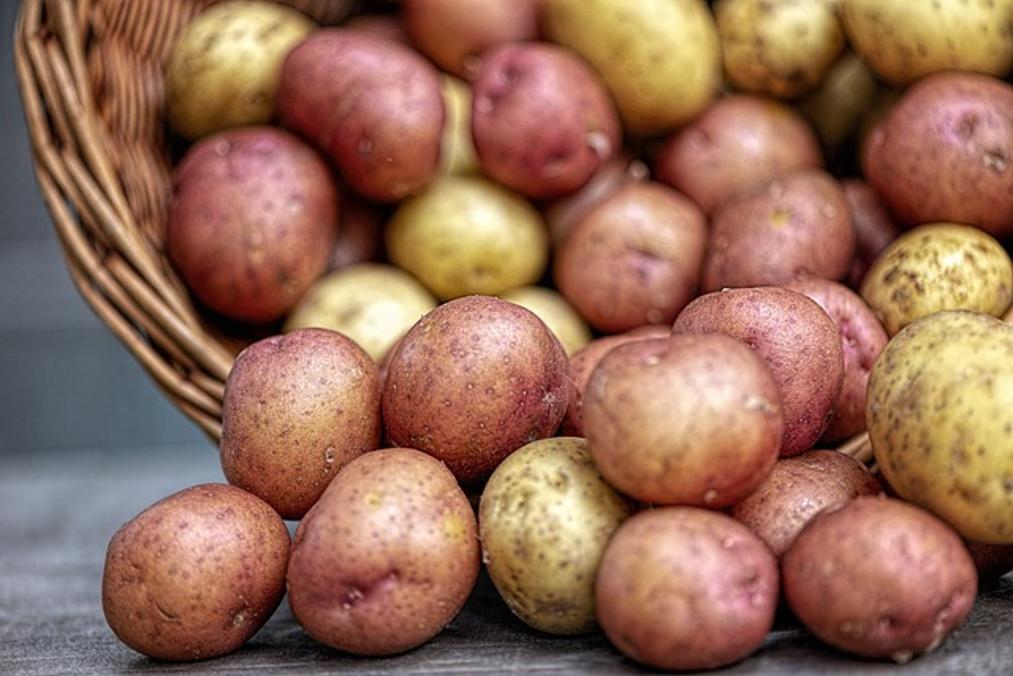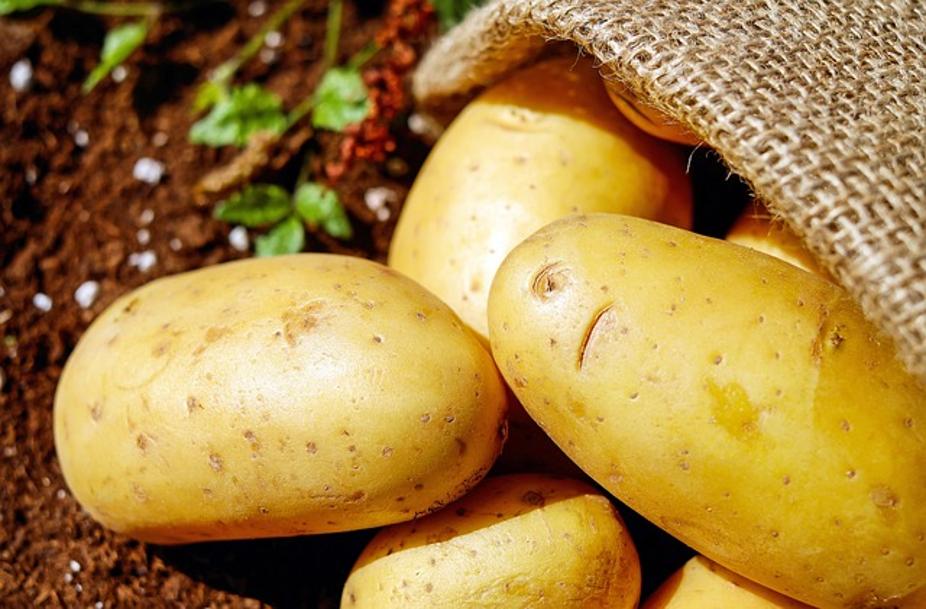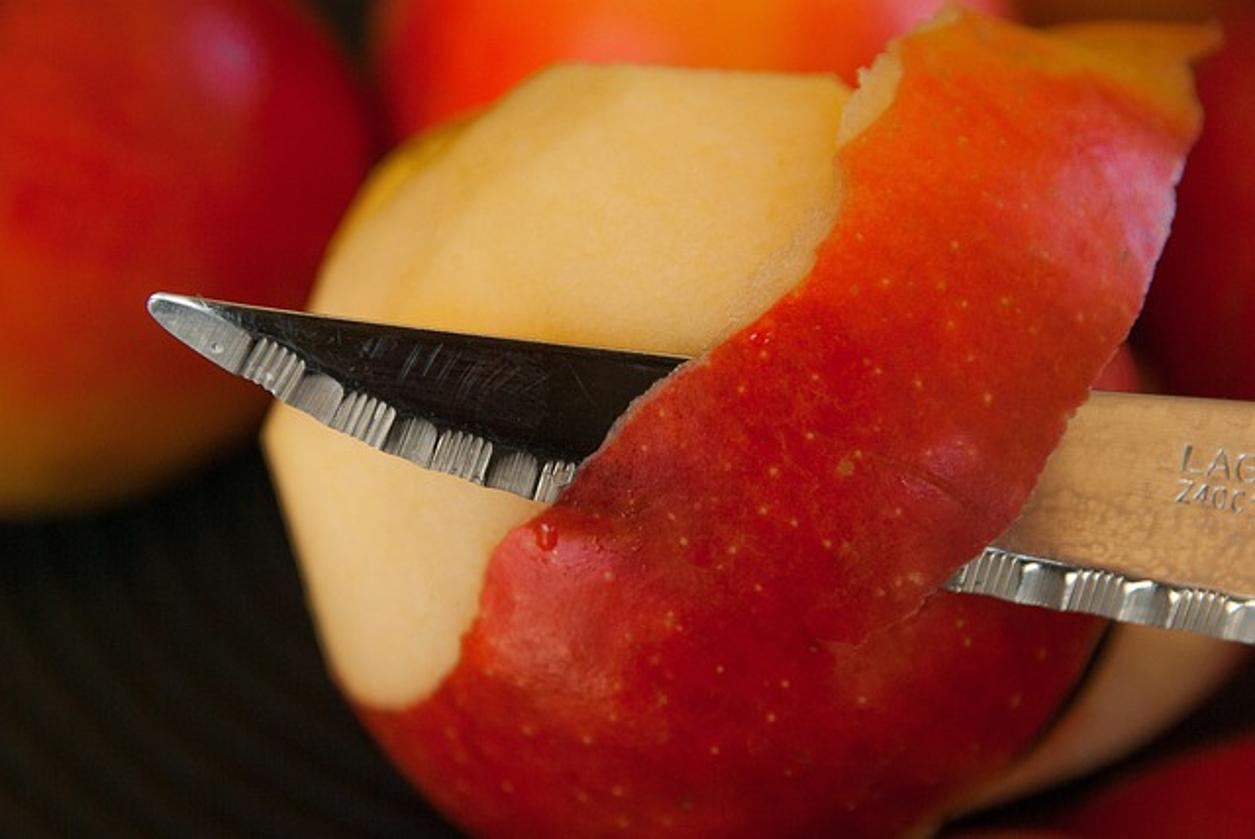Introduction
Peeling potatoes might seem like a straightforward task, but it requires some finesse, especially if you’re using a knife. A knife can be an efficient tool for peeling potatoes, but it also poses more risk if not handled correctly. Whether you’re prepping for a hearty stew, homemade fries, or a classic potato salad, learning how to peel potatoes properly can save you time and make your cooking process smoother. In this guide, you will discover the best techniques, safety tips, and expert advice to ensure you get the job done efficiently and safely.

Choosing the Right Knife
Before diving into the peeling process, selecting the right kind of knife is crucial. Using an inappropriate knife can make the task cumbersome and increase the risk of injury.
A paring knife is often the best choice for peeling potatoes. Its small size and pointed tip provide great control, allowing you to make precise cuts. Typically, a paring knife with a blade length between 2.5 to 4 inches works best. Look for a knife that feels comfortable in your hand and has a non-slip handle.
While a paring knife is recommended, another suitable option is a utility knife. Utility knives are slightly larger (around 5 to 7 inches long) and can double up for slicing and dicing after peeling.
Lastly, consider the blade material. Stainless steel blades are durable and require less maintenance compared to carbon steel blades. However, carbon steel knives often retain their sharpness for a longer period.
Choosing the right knife sets the foundation for a safe and efficient peeling process, making the experience more enjoyable and less hazardous.
Preparing the Potatoes
Now that you’ve selected your knife, it’s time to prepare the potatoes for peeling. Proper preparation can significantly streamline the peeling process.
-
Wash and Scrub: Begin by thoroughly washing the potatoes under cold running water. Use a vegetable brush to scrub away any dirt or debris. This is especially important for potatoes with a lot of nooks and crannies.
-
Inspect for Imperfections: Check the potatoes for any blemishes, sprouts, or eyes. Using the tip of your knife, remove these imperfections by cutting them out carefully.
-
Dry the Potatoes: After washing, pat the potatoes dry with a clean towel. Wet potatoes can be slippery, increasing the risk of accidental cuts.
-
Set Up Your Workstation: Ensure your chopping board is stable. A damp cloth placed underneath the board can prevent it from slipping. Gather necessary tools like your knife, a bowl for the peels, and a clean surface for the peeled potatoes.
Proper preparation sets you up for a smooth peeling process, ensuring efficiency and reducing risks of injury.
Step-by-Step Peeling Techniques
Peeling potatoes with a knife requires technique and patience. The following steps will guide you through the process, ensuring consistent results.
Positioning the Knife and Potato
-
Hold the Potato Firmly: Grip the potato in your non-dominant hand. Hold it over the bowl designated for peels.
-
Knife Position: Hold the knife in your dominant hand with your thumb on the back of the blade and fingers wrapped around the handle. This grip provides both control and safety.
Detailed Peeling Process
-
Create a Starting Point: Begin by making a small incision near the top end of the potato. This gives you a starting point to work from.
-
Peel Downward: Starting from the incision, slide the knife downward in a gentle, smooth motion. The blade should glide under the skin, removing a thin layer.
-
Rotate the Potato: Continuously rotate the potato as you peel, ensuring you work methodically to cover the entire surface.
-
Trim Remaining Eyes and Spots: Once the main peel is removed, inspect the potato again and use the knife’s tip to trim any remaining imperfections.
Tips for Consistent Peeling Thickness
-
Maintain Knife Angle: Keeping a consistent angle of the blade ensures that you peel evenly. Typically, a 20-degree angle works well.
-
Steady Pressure: Apply firm but gentle pressure. Pressing too hard may remove excessive potato flesh along with the skin.
-
Practice Makes Perfect: Consistent results come with practice. Don’t be discouraged if your first few attempts aren’t perfect.
Mastering these steps ensures you peel potatoes cleanly and consistently, making for even cooking and better presentation.

Safety Tips When Peeling with a Knife
Safety should always be a priority when handling sharp tools like knives. Here are several precautions to keep in mind:
-
Use a Sharp Knife: Dull knives require more force to cut, increasing the likelihood of slipping and causing injury. Regularly sharpen your knife to maintain its edge.
-
Keep Fingers Tucked: Always keep your fingers tucked in and away from the blade to reduce the risk of accidental cuts.
-
Sturdy Cutting Board: Ensure your cutting board is stable. A moving board can unexpectedly shift, making it dangerous to cut.
-
Pay Attention: Never rush the peeling process. Stay focused and take your time, especially if you’re new to using a knife for peeling.
-
Cut Away From Your Body: Always peel away from yourself to avoid directing the knife towards your hand or body.
Implementing these safety tips will help you peel potatoes confidently and minimize the risk of accidents.

Common Mistakes and How to Avoid Them
Despite seeming straightforward, peeling potatoes can go wrong if not done correctly. Here are common mistakes and how to avoid them:
-
Using the Wrong Knife: As discussed earlier, using an inappropriate knife makes the task harder and increases injury risk. Always choose a sharp paring knife or utility knife.
-
Peeling Too Thickly: Removing too much potato flesh along with the skin is wasteful. Aim for removing just the thin outer layer by maintaining a consistent knife angle.
-
Ignoring Safety Precautions: Not adhering to safety measures can lead to accidents. Ensure you follow safety guidelines to protect your hands.
-
Working Too Fast: Speed can compromise accuracy and safety. Peel at a comfortable pace, focusing on consistency and safety.
Avoiding these common pitfalls ensures efficient and safe potato peeling, making the process more enjoyable.
Knife Maintenance and Care
Taking care of your knife ensures it remains sharp and effective for peeling. Proper maintenance also extends your knife’s lifespan.
-
Regular Sharpening: Use a sharpening stone or tool to keep the blade’s edge sharp. Sharpening should be done periodically depending on usage.
-
Clean After Use: Rinse the knife under hot water immediately after use to remove potato residue. Avoid using abrasive pads which can damage the blade.
-
Dry Completely: Ensure the knife is thoroughly dried before storing. Moisture can lead to rust, especially in carbon steel blades.
-
Proper Storage: Store your knife in a knife block or magnetic strip to protect the blade. Avoid tossing it in a drawer with other utensils.
Caring for your knife ensures it remains reliable and safe for future use.
Conclusion
Peeling potatoes with a knife is a valuable skill that can make your kitchen tasks more efficient. By choosing the right knife, preparing your potatoes properly, and following a step-by-step technique, you can achieve perfect results. Always prioritize safety and take care of your tools to enjoy a seamless peeling experience.
Frequently Asked Questions
What type of knife is best for peeling potatoes?
A paring knife is typically the best choice for peeling potatoes due to its small size and precise control. Utility knives can also be suitable if they are sharp and comfortable to handle.
How can I avoid cutting myself while peeling potatoes?
To avoid cutting yourself, use a sharp knife, grip the potato securely, keep your fingers tucked in, and always peel away from your body. Ensuring your cutting board is stable also significantly reduces the risk of accidents.
Can I use the same knife for peeling and cutting?
Yes, you can use the same knife for peeling and cutting. If using a paring knife, it works well for intricate peeling and small cutting tasks. A utility knife can handle both peeling and slicing tasks efficiently. Just ensure the knife is sharp and properly maintained.
